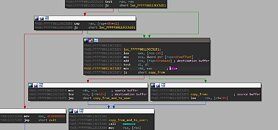
Microsoft Acknowledges Severe, Unpatched, Actively Exploited Print Spooler Service Vulnerability "PrintNightmare"
Microsoft has acknowledged the existence of a severe and currently unpatched vulnerability in Windows' Print Spooler service (CVE-2021-34527). The vulnerability affects all versions of Windows, and is being actively exploited as per Microsoft. Poetically named "PrintNightmare", the vulnerability was published earlier this week as a PoC (Proof of Concept) exploit by security researchers, which believed the flaw had already been addressed by Microsoft at time of release (the company patched up another Print Spooler vulnerability issue with the June 2021 security patch). The code was made public and quickly scrapped when developers realized it gave would-be bad actors access to an unpatched way into users' systems - but since it's the Internet, the code had already been forked in GitHub.
The vulnerability isn't rated by the Windows developer as of yet, but it's one of the bad ones: it allows attackers to remotely execute code with system-level privileges. This is the ultimate level of security vulnerability that could exist. Microsoft is currently investigating the issue and developing a patch; however, given the urgency in closing down this exploit, the company is recommending disabling of the Windows Print Spooler service wherever possible, or at least disabling inbound remote printing through Group Policy. If you don't have a printer, just disable the service; if you do, please disable the Group Policy as per the steps outlined in the image below.
The vulnerability isn't rated by the Windows developer as of yet, but it's one of the bad ones: it allows attackers to remotely execute code with system-level privileges. This is the ultimate level of security vulnerability that could exist. Microsoft is currently investigating the issue and developing a patch; however, given the urgency in closing down this exploit, the company is recommending disabling of the Windows Print Spooler service wherever possible, or at least disabling inbound remote printing through Group Policy. If you don't have a printer, just disable the service; if you do, please disable the Group Policy as per the steps outlined in the image below.






































